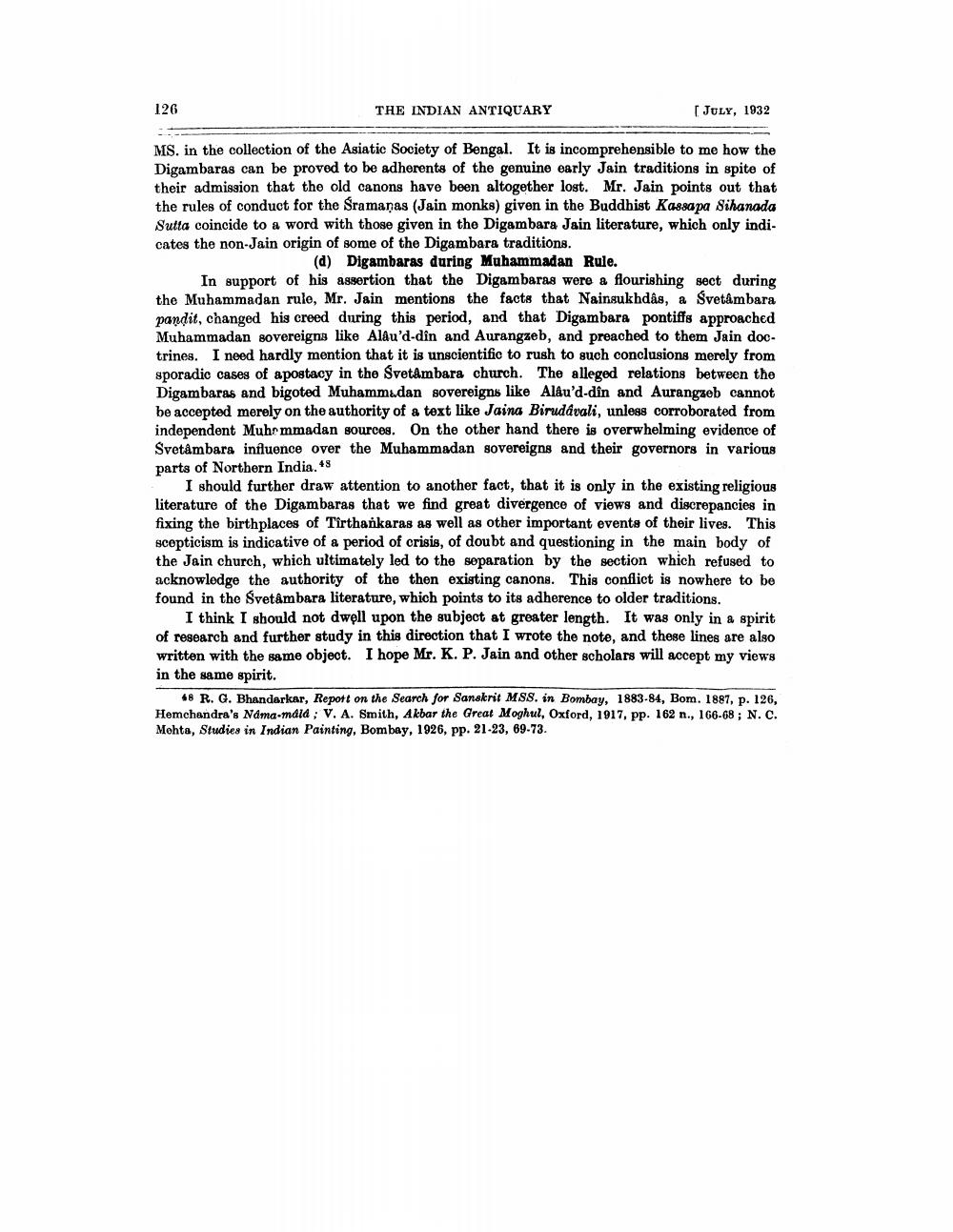________________
126
THE INDIAN ANTIQUARY
[JULY, 1932
MS. in the collection of the Asiatic Society of Bengal. It is incomprehensible to me how the Digambaras can be proved to be adherents of the genuine early Jain traditions in spite of their admission that the old canons have been altogether lost. Mr. Jain points out that the rules of conduct for the Sramanas (Jain monks) given in the Buddhist Kassapa Sihanada Sutta coincide to a word with those given in the Digambara Jain literature, which only indicates the non-Jain origin of some of the Digambara traditions.
(d) Digambaras during Muhammadan Rule. In support of his assertion that the Digambaras were a flourishing sect during the Muhammadan rule, Mr. Jain mentions the facts that Naingukhdås, a Svetambara pandit, changed his creed during this period, and that Digambara pontiffs approached Muhammadan sovereigns like Alau'd-dîn and Aurangzeb, and preached to them Jain doctrines. I need hardly mention that it is unscientific to rush to such conclusions merely from sporadic cases of apostacy in the Svetambara church. The alleged relations between the Digambaras and bigoted Muhammadan sovereigns like Alau'd-dîn and Aurangzeb cannot be accepted merely on the authority of a text like Jaina Birudávali, unless corroborated from independent Muhrmmadan sources. On the other hand there is overwhelming evidence of Svetámbara influence over the Muhammadan sovereigns and their governors in various parts of Northern India. 48
I should further draw attention to another fact, that it is only in the existing religious literature of the Digambaras that we find great divergence of views and discrepancies in fixing the birthplaces of Tirthankaras as well as other important events of their lives. This scepticism is indicative of a period of crisis, of doubt and questioning in the main body of the Jain church, which ultimately led to the separation by the section which refused to acknowledge the authority of the then existing canons. This conflict is nowhere to be found in the Svetâmbara literature, which points to its adherence to older traditions.
I think I should not dwell upon the subject at greater length. It was only in a spirit of research and further study in this direction that I wrote the note, and these lines are also written with the same object. I hope Mr. K. P. Jain and other scholars will accept my views in the same spirit.
48 R. G. Bhandarkar, Report on the Search for Sanskrit MSS. in Bombay, 1883-84, Bom. 1887, p. 126, Hemchandra's Nama.mdid; V. A. Smith, Akbar the Great Moghul, Oxford, 1917, pp. 162 n., 166-68; N. C. Mehta, Studies in Indian Painting, Bombay, 1926, pp. 21-23, 69-73.




